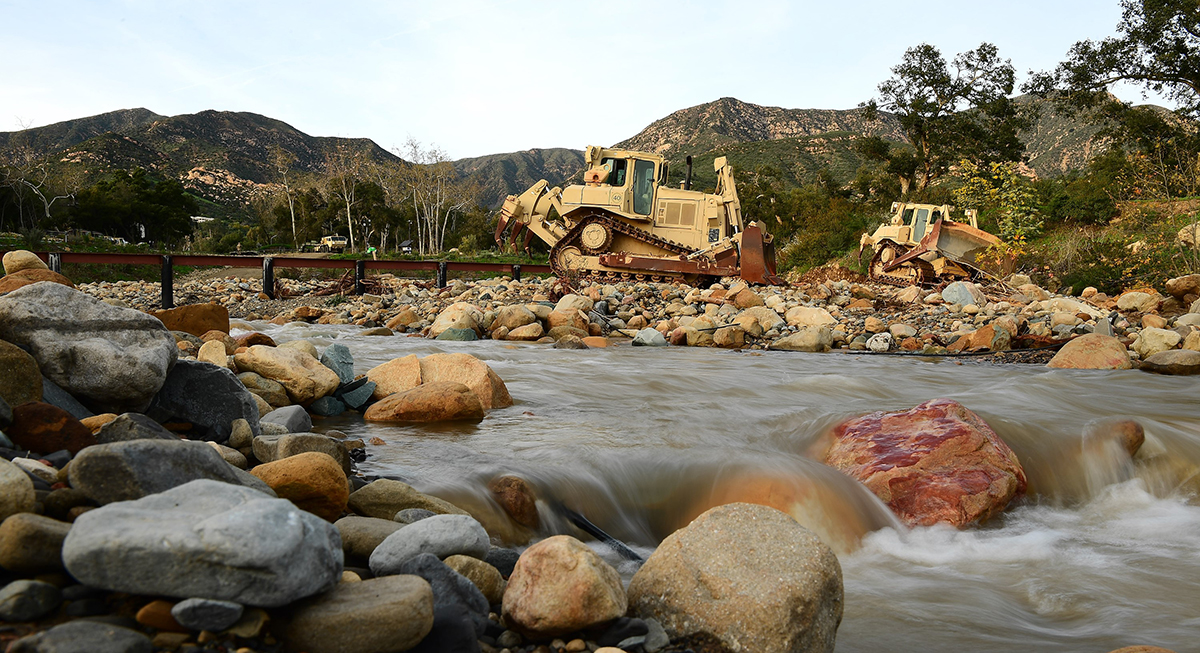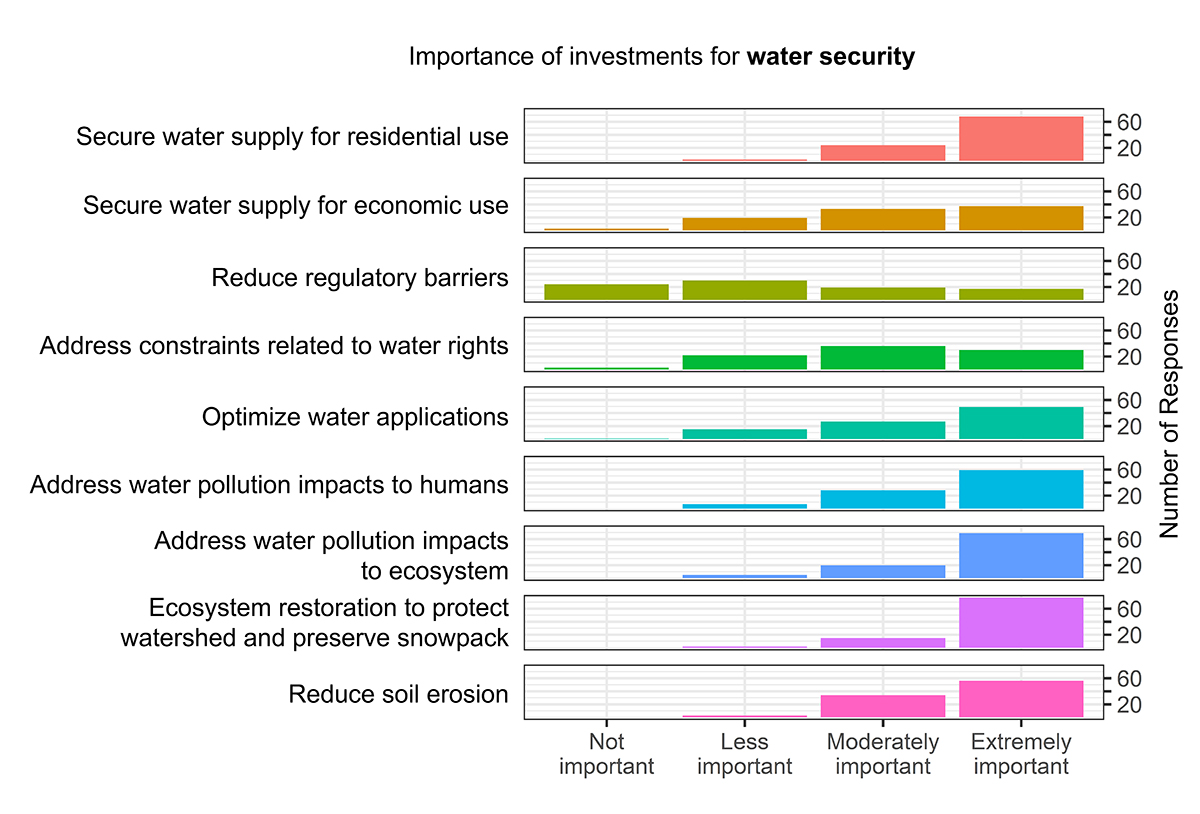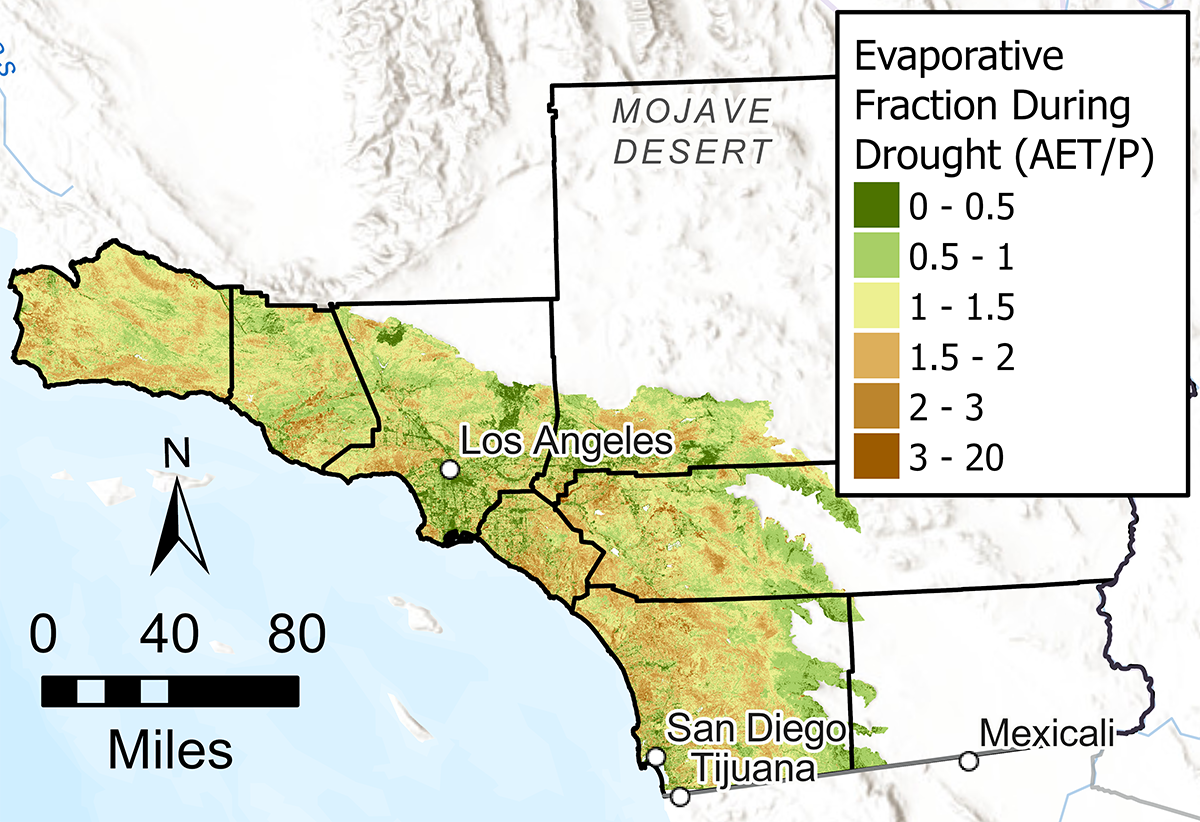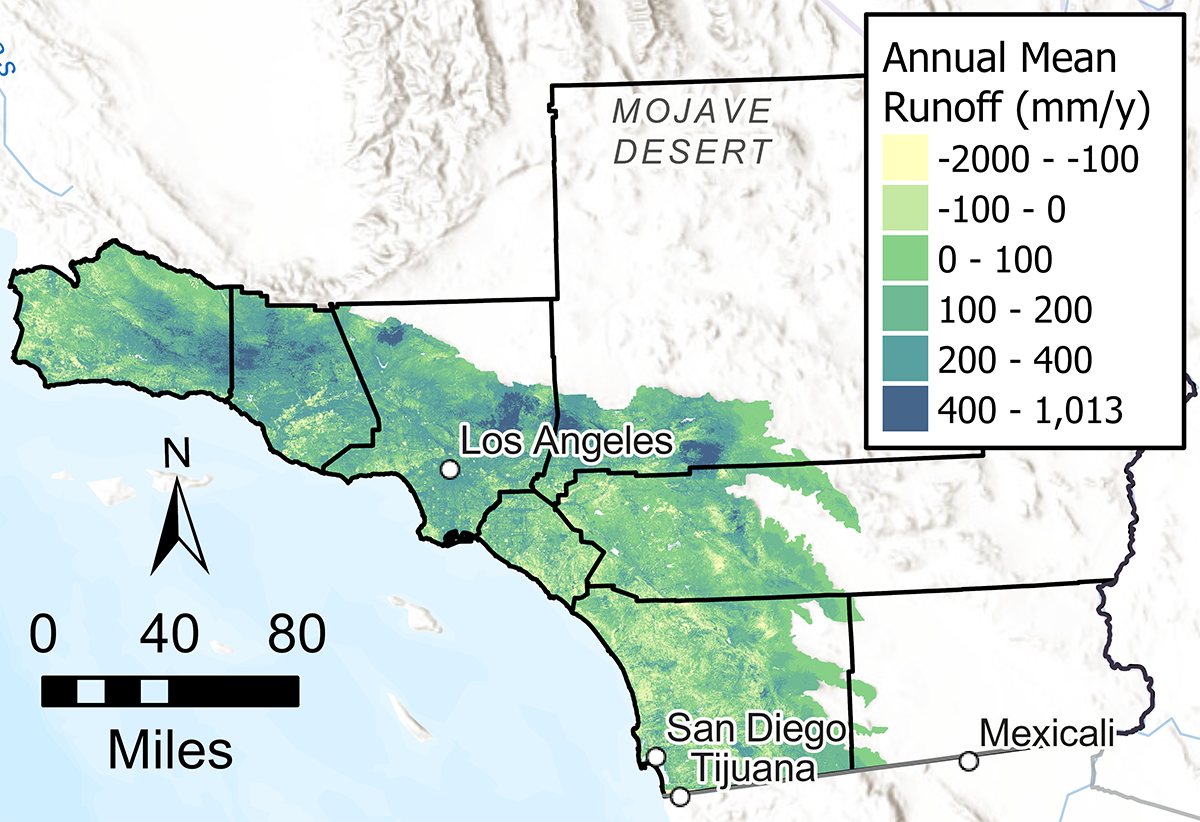Southern California Regional Profile
Water Security

Overview
Wildfire hazard and post-fire impacts are exacerbated by other regional concerns related to water security. California has recently experienced a series of severe multi-year droughts. Drought has caused extensive dieback of trees, shrubs, and grasses across Southern California. Because dead plants and moisture-stressed live plants are more flammable than healthy plants, drought makes it easier for fire to spread and for spot fires to ignite from wind-carried embers. Extensive chaparral dieback driven by 2011-2016 drought contributed to the massive sizes of the 2017 Thomas Fire and 2018 Woosley Fire.
Wildfire also makes landscapes more vulnerable to extreme flooding, erosion, and debris flows. When vegetation cover is lost, the landscape is less stable, and hillslopes become more prone to landslides. Moderate and high intensity wildfire can also alter soil properties such as infiltration rates and hydrophobicity for up to 2-4 years after being burned, making the soil less permeable and further increasing runoff. Debris flows, or mudslides, are fast-moving landslides that generally occur after intense rain or rapid snowmelt. Burned areas denuded of vegetation are especially susceptible. Shortly following the 2017 Thomas Fire, heavy rain caused large debris flows uphill from the town of Montecito in Santa Barbara County. This resulted in 21 deaths and millions of dollars of damages. The risk of debris flows occurring on burned hillsides remains elevated for several years following fire, and the increase in extreme precipitation events forecast under climate changes makes it more likely that debris flows will be triggered.
In addition to the acute threat of debris flows, runoff and erosion following wildfire can also affect water quality by transporting ash, debris, and sediments into streams and reservoirs. Increased sedimentation reduces reservoir capacity, which impacts both water storage and flood control. Also, some of these sediments contain naturally occurring hazardous materials which may impact downstream ecosystems and enter community water supply. When structures and other artificial materials burn, different chemicals are released than when plants burn. Some of the pollutants that are eroded or leached can be especially harmful to human health and aquatic organisms, including mercury, lead, and other metals that are released by fire. A study of post-fire water quality in areas burned by the 2018 Woolsey Fire found that areas which experienced moderate and high soil burn severity had significantly larger pollutant levels for E. coli, nitrogen, phosphorous and total suspended solids. Elevated pollutant levels can be dangerous to human health. Excessive nutrients can also impact aquatic ecosystems by causing an overabundance of plants and algae to grow, which depletes oxygen supply in the water and can cause fish and other aquatic organisms to die.
Proactive management actions and investments can reduce the threat of damaging landslides and protect water quality. For instance, restoring vegetation in burned areas can reduce erosion. Upgrading and maintaining water infrastructure (e.g., larger culverts, debris dams) can better protect communities and water resources from potential flood damage and debris flow impacts. Maintaining sewer infrastructure and monitoring water quality can reduce the threat of pollutants entering community water supply.
Stakeholder Perspectives

Survey respondents were asked how important the following potential areas of investment are for achieving water security in their subregion. Most investments were perceived as being at least ‘moderately important,’ except for reducing regulatory barriers. Investments that stakeholders perceived to be top priorities were ecosystem restoration to protect watershed and preserve snowpack, as well as secure water supply for residential use and addressing water pollution impacts to ecosystems. Several interviewees noted how issues related to water security interact with other issues related to ecological and community resilience in the Southern California region. One concern is that massive floods and landslides can occur after fire, and increased soil erosion following fire also contributes to sedimentation in dams. Another interview noted that drought can increase the frequency and scale of wildfires because drought is more conducive to invasive species outcompeting native species, and drought also increases vegetation dieback. These effects in turn increase fuels on the landscape and contribute to larger fires. One interviewee highlighted the need for the public to understand how water and fire resilience are connected through forest ecosystem health. Water coming off of the Angeles National Forest provides 30% of the water for Los Angeles County; watershed health is thus extremely important for community water security.
Resource Conditions


Water security can be assessed in terms of actual evapotranspiration/precipitation (AET Fraction) (A) and annual mean runoff (B). Actual evapotranspiration is the combined amount of water that evaporates from the land surface in addition to the water that is lost as vapor from plants. AET Fraction represents the percentage of water needed by plants that is met by precipitation during a severe 4-year drought. This metric is important for water security because it estimates the moisture stress that would be experienced by the vegetation during drought. Values > 1 indicate moisture stress driven by shortfalls in precipitation relative to plant needs. Values < 1 indicate no water stress. Both vegetation management and disturbances like wildfire can affect AET Fraction by reducing the amount of vegetation at a site and thereby lowering the amount of water needed by plants. Annual mean runoff is the surplus water discharged from a location in the form of surface or groundwater flows. This metric is important for water security because it estimates the amount of surplus water for downstream use. Vegetation management and disturbances like wildfire can affect runoff in part by changing the vegetation conditions at a site. For example, forest treatments that thin trees in moisture-stressed areas may increase runoff and provide more water availability downstream.
